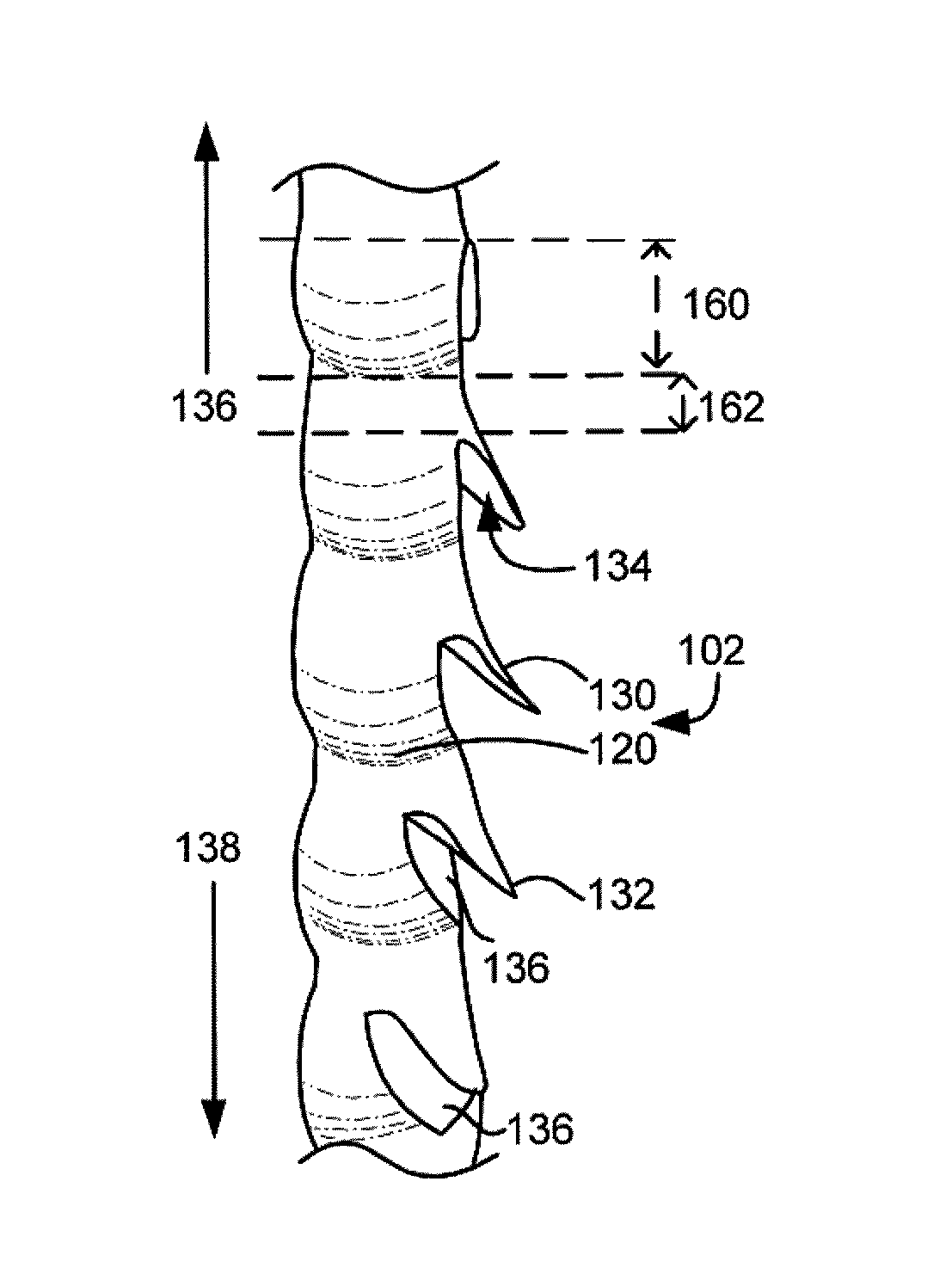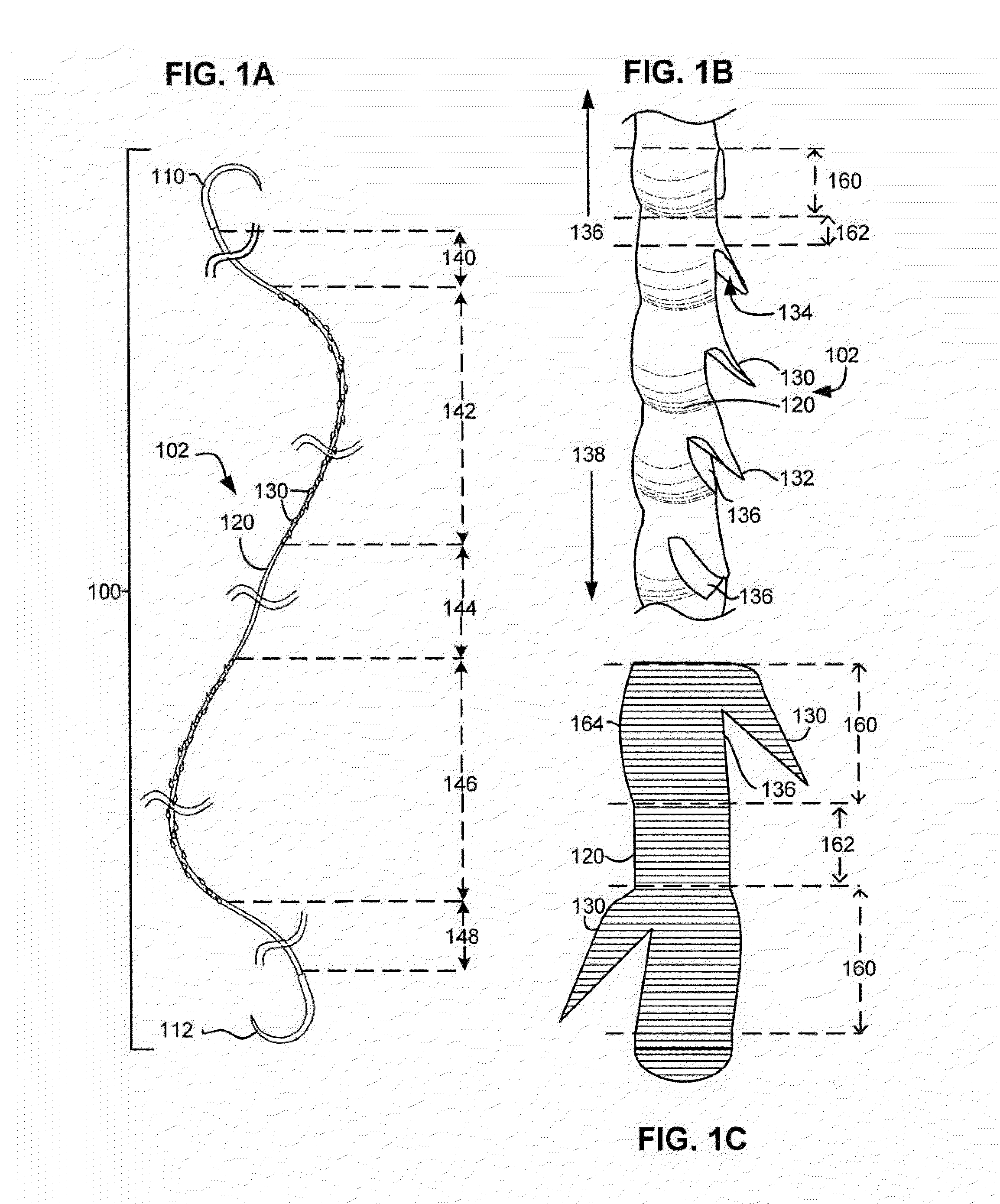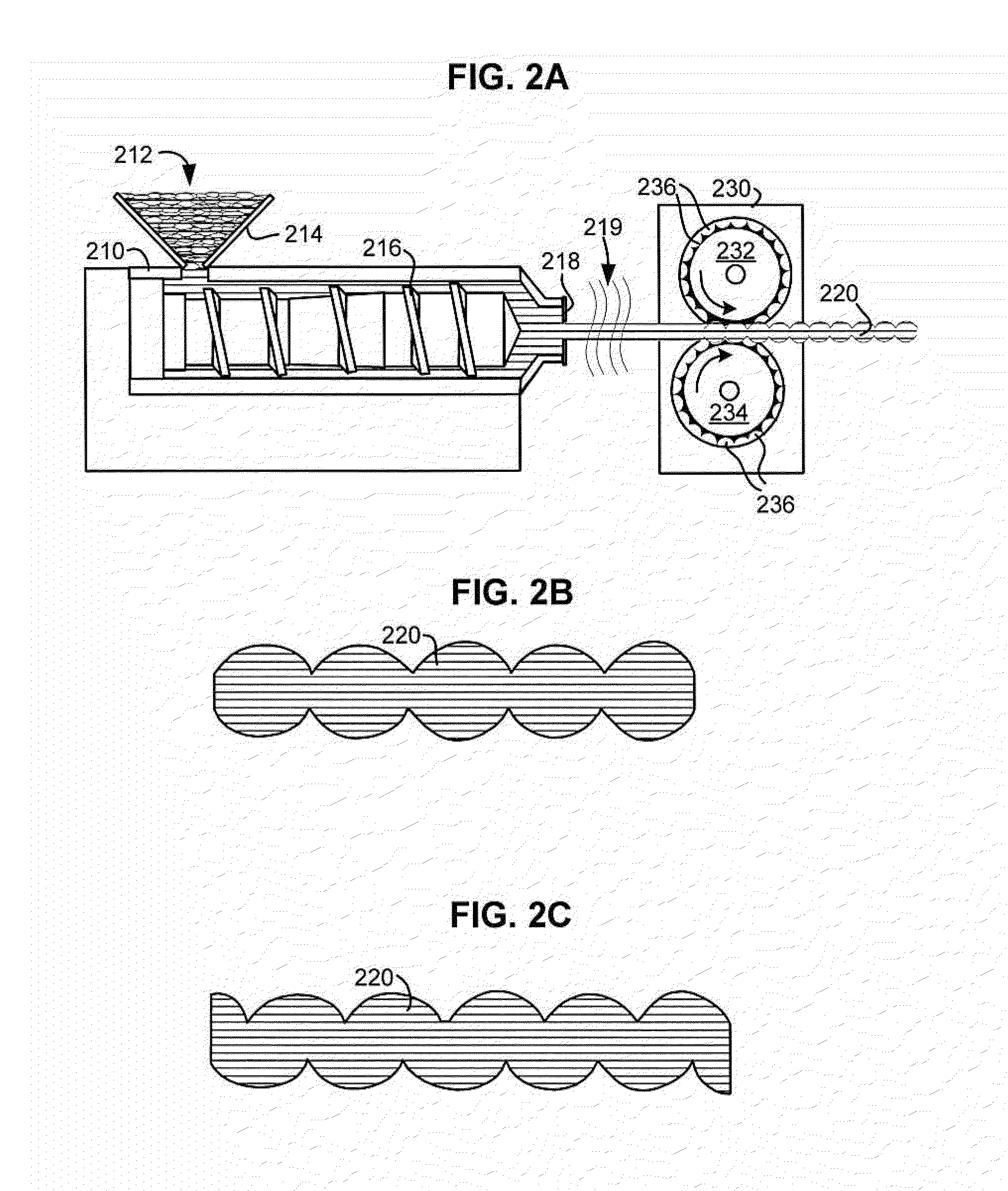Self-retaining suture with variable dimension filament and method
a self-retaining suture and variable dimension technology, applied in the field of self-retaining systems for surgical procedures, can solve the problems that the creation or deployment of retainer features of self-retaining sutures may be difficult to achieve, and achieve the effect of reducing the core cross-section of filament and minimizing the impact of retainer formation on the final tensile strength of sutures
- Summary
- Abstract
- Description
- Claims
- Application Information
AI Technical Summary
Benefits of technology
Problems solved by technology
Method used
Image
Examples
second embodiment
[0076]FIG. 4C illustrates a self-retaining suture 430 according to an embodiment of the present invention. In self-retaining suture 430 of FIG. 4C, retainers 432 are cut in a filament 434 which has a sinusoidal variation in the distribution of material. In the suture 430 of FIG. 4C the cross-sectional area varies along the length of the filament. Retainers 432 are cut into the filament 434 so as to utilize the regions of additional material 436. After the retainers 432 are cut, the minimum cross-section of the filament remaining is significantly larger than for the uniform filament of FIG. 4A. The minimum cross-section will be larger even where the volume of material in the filament is equivalent. Thus, the configuration of FIG. 4C results in a larger minimum cross-section after retainer cutting for the same volume material. This results in a higher tensile strength for a given suture size than would be possible with a uniform filament. Although a sinusoidal distribution has been il...
third embodiment
[0077]FIG. 4D illustrates a self-retaining suture 440 according to an embodiment of the present invention. In self-retaining suture 440 of FIG. 4D, retainers 442 are cut in a filament 444 which has a non-sinusoidal variation in the distribution of material. Retainers 442 are cut into the filament so as to utilize the regions of additional material 446. After the retainers 442 are cut, the minimum cross-section of the filament remaining is significantly larger than for the uniform filament of FIG. 4A. The minimum cross-section will be larger even where the volume of material in the filament is equivalent. Thus, the configuration of FIG. 4D results in a larger minimum cross-section after retainer cutting for the same volume material. This results in a higher tensile strength for a given suture size than would be possible with a uniform filament.
fourth embodiment
[0078]FIG. 4E illustrates a self-retaining suture 450 according to an embodiment of the present invention. In self-retaining suture 450 of FIG. 4E, retainers 452 are formed by localized melting of filament 454 which has a sinusoidal variation in the distribution of material. Retainers 452 are formed by melting the filament and the melted filament material is drawn out by tool 458. Forming the retainers 452 in this manner requires material and consequently the amount of material remaining in the filament is reduced surrounding the retainers 452. However, the retainers 452 are formed in the regions 456 where extra material having extra material. Thus, even after the retainers 452 are formed, the minimum cross-section of the filament remaining is as large as or larger than the cross-section of the filament in the inter-retainer regions. Thus the configuration of FIG. 4E results in a larger minimum cross-section after retainers 452 are formed for the same volume of material. This result...
PUM
| Property | Measurement | Unit |
|---|---|---|
| diameter | aaaaa | aaaaa |
| size | aaaaa | aaaaa |
| length | aaaaa | aaaaa |
Abstract
Description
Claims
Application Information
 Login to View More
Login to View More - R&D
- Intellectual Property
- Life Sciences
- Materials
- Tech Scout
- Unparalleled Data Quality
- Higher Quality Content
- 60% Fewer Hallucinations
Browse by: Latest US Patents, China's latest patents, Technical Efficacy Thesaurus, Application Domain, Technology Topic, Popular Technical Reports.
© 2025 PatSnap. All rights reserved.Legal|Privacy policy|Modern Slavery Act Transparency Statement|Sitemap|About US| Contact US: help@patsnap.com



